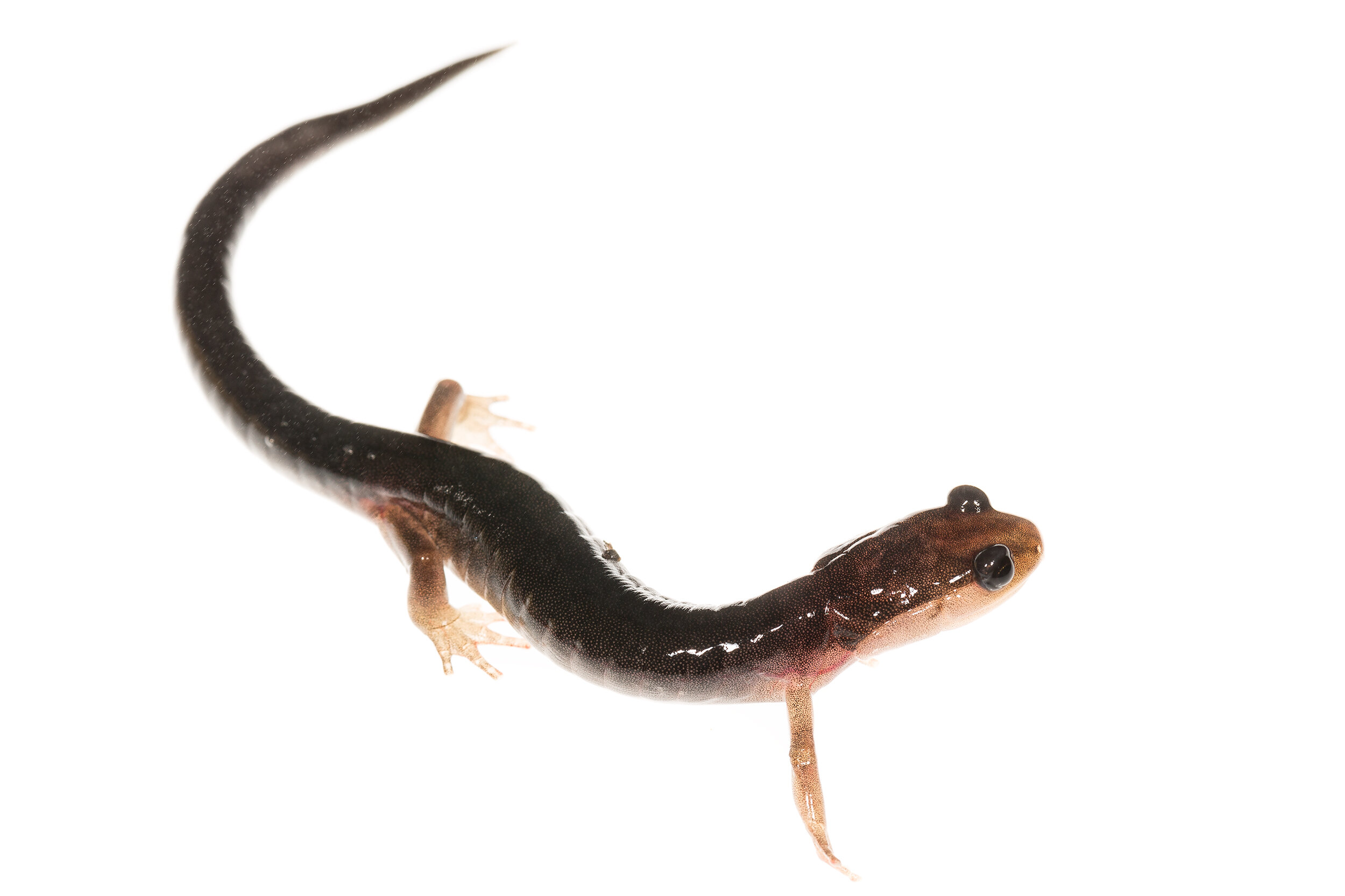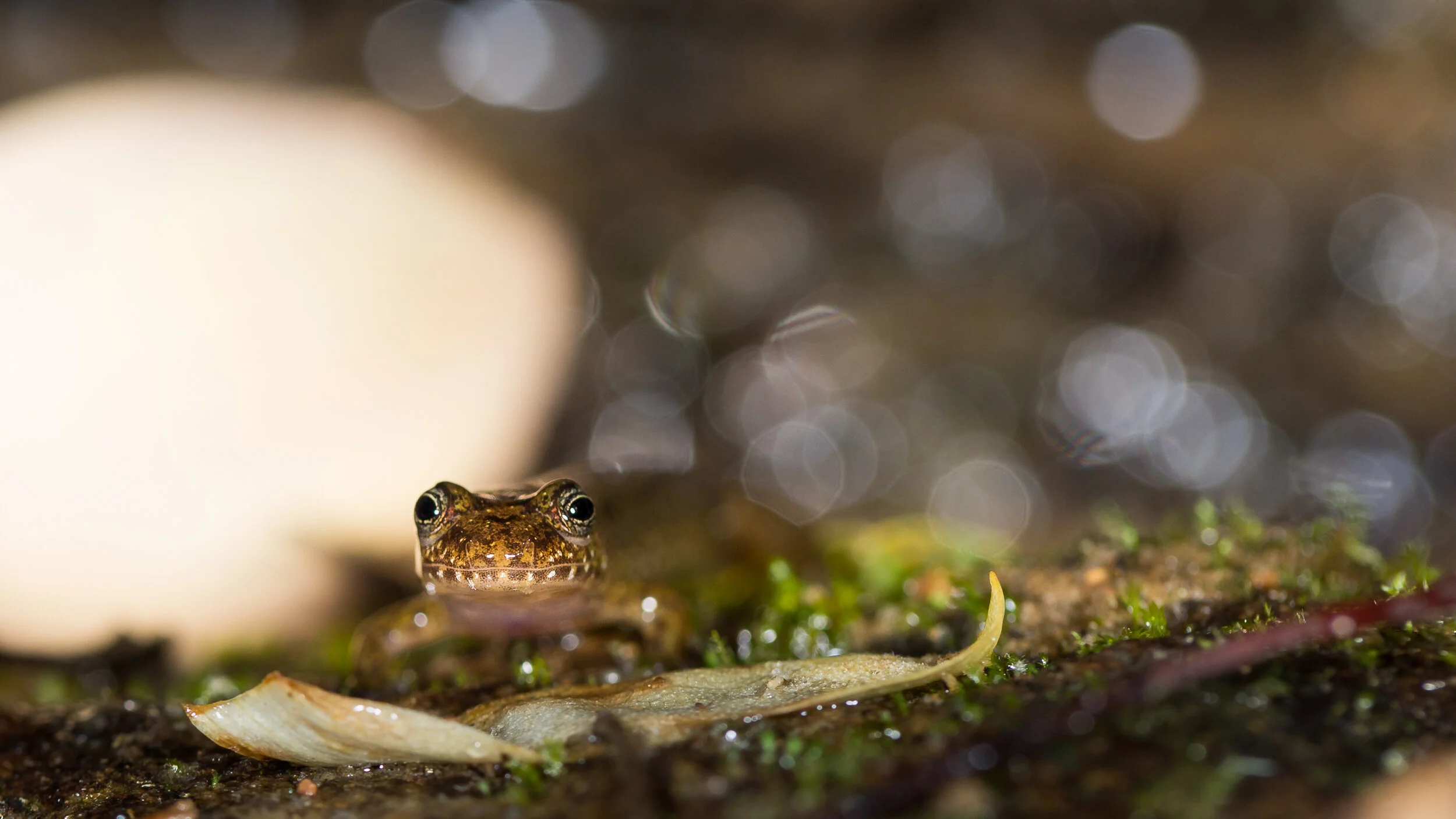Great Smoky Mountains National Park has more species of salamanders than anywhere else on earth
It's 3 AM. We're miles from the closest road and many more miles from cell service. Deep inside Great Smoky Mountains National Park, evolutionary biologist and Ph.D. candidate Austin Patton is searching for salamanders. But not just any salamander. He's searching for hybrids of the red-cheeked salamander (Plethodon jordani), gray-cheeked salamander (Plethodon metcalfi), and the Southern Appalachian Salamander (Plethodon teyahalee). While each species has its respective range, there are a few locations within the park where their ranges overlap.
Hybridization is the process where different but closely related species interbreed, creating offspring with both parents' attributes. Hybridization has typically been viewed as an opposing force in biology. Still, recent studies have poised that this process may accelerate diversification. This could result in new species better adapted to a rapidly changing environment. Patton uses modern genomic approaches to help describe the contribution of hybridization to the historical diversification of Plethodontid salamanders and its role in contemporary adaptation.
In the middle of the night, researcher Austin Patton and Discover Life in America intern Mark Sowers search for salamanders by a river bed in Great Smoky Mountains National Park.



Red-cheeked, gray-cheeked, and southern Appalachian salamanders are lungless salamanders. Respiration instead occurs directly through their skin which must remain moist at all times. At night they will emerge from their burrows to forage on the forest floor for small invertebrates. While they look harmless, their tail is armed with the ability to secret an extremely sticky mucus if a predator attacks. Sticky mucus might not sound like much of a defense, but there have been reports of snakes unable to close their mouth after going for red-cheeked salamanders.
Patton takes a small tail clipping from a salamander that will later be used to examine and compare DNA with other samples. Within a month or two, the salamander will have grown its tail entirely back.
To understand hybridization between salamanders, Patton needs a DNA sample. Using tweezers, Patton pinches the tip of a salamander's tail, spurring it to self amputate. This is a natural process called autotomy, used to escape predators. Within a few months, the salamander will have regrown its tail. Patton will compare the DNA of samples from each salamander by the process of Polymerase Chain Reaction (PCR), a widely used technique for amplifying DNA. When the genetic analysis is complete, it will reveal the parental species and genetic makeup of each specimen collected. This data will unveil which species are hybridizing and wherein the park it's occurring.
The information gathered from Patton's research will help better understand the diversification process of Plethodontid salamanders and help conservationists better manage and protect these species. Despite being small in size, their high overall biomass means that salamanders play an essential role in ecosystem health both as predators and prey. Without salamanders, ecosystems could suffer from an overabundance of insects, and a food shortage for many other forest inhabitants. Salamanders have been evolving for over 160 million years. The question is, can evolution allow salamanders to adapt fast enough to a rapidly changing environment.
Expressing traits from the red-cheeked, gray-cheeked, and Southern Appalachian salamander, this could be the hybrid salamander Patton was hoping to find.
Where the ranges of the red-cheeked, gray-cheeked, and Southern Appalachian salamanders ranges overlap, Patton began finding individuals that expressed a mix of traits from each species. One particular salamander had cheeks that appeared to be a mix of the red-cheeked and gray-cheeked and contained white flecking (speckles around the jaw), which is a common characteristic of the Southern Appalachian salamander. While this is as good of a visual indicator as you could find to support the three species' hybridization, we won't know for sure until PCR is completed.











